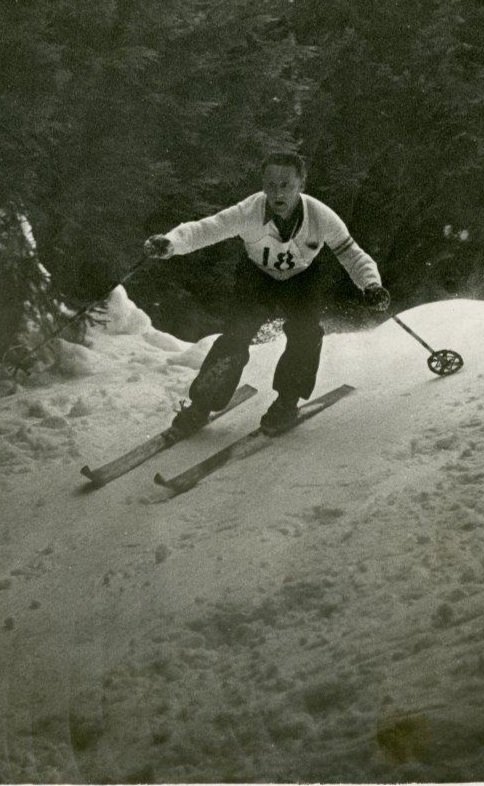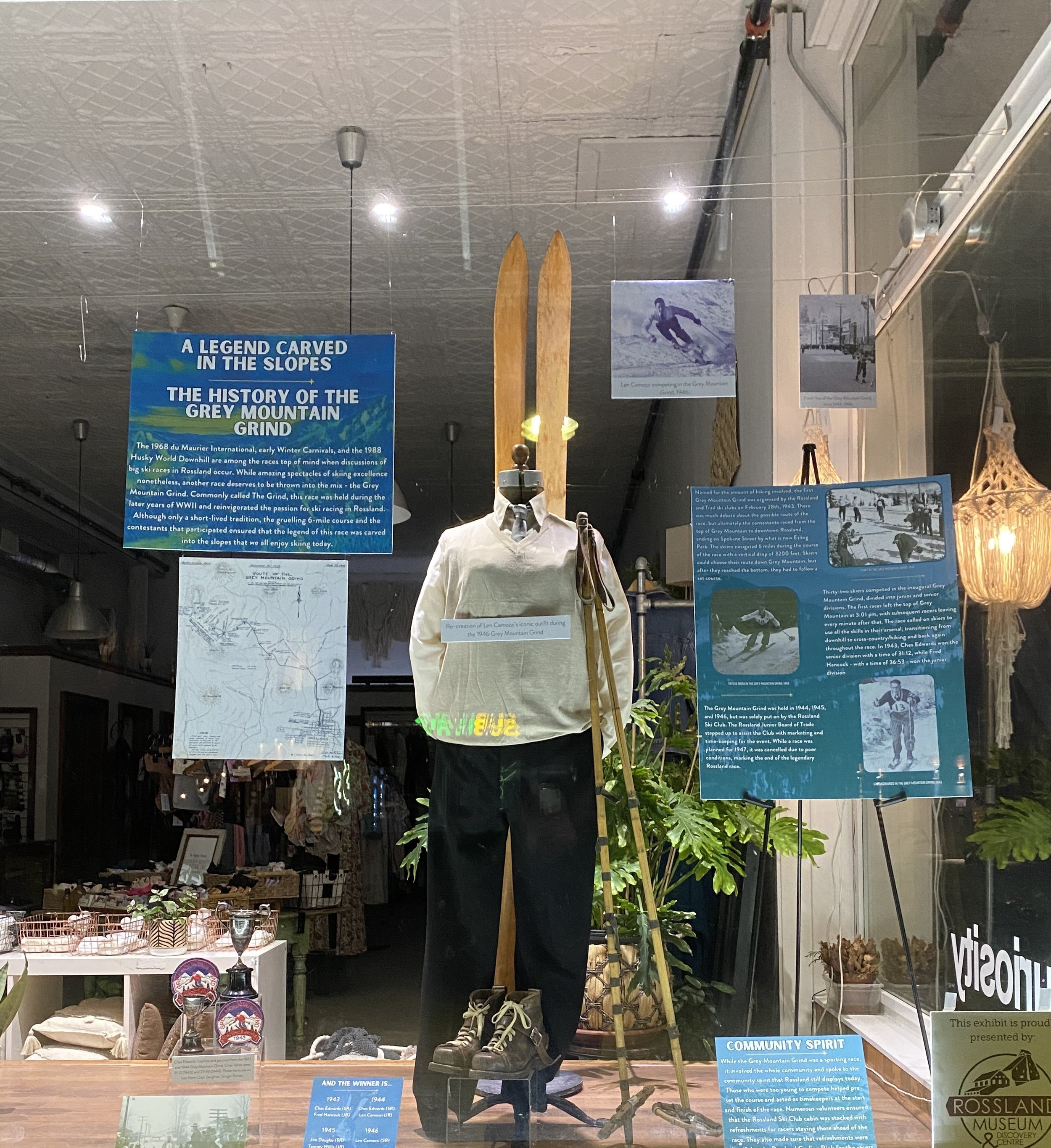A Legend Carved in the Slopes: The History of the Grey Mountain Grind
The Grey Mountain Grind, commonly called “The Grind”,
was a ski race introduced during the latter years of WWII and held annually from 1943-46, helping to reinvigorate the passion for ski racing in Rossland. Although only a short-lived tradition, the legend of the gruelling 6-mile course was carved into the slopes we ski today.
Named for the amount of hiking involved, the first Grey Mountain Grind was organised by the Rossland and Trail ski clubs on February 28th, 1943. There was much debate about the possible route of the race, but ultimately the contestants raced from the top of Grey Mountain to downtown Rossland, ending on Spokane Street by what is now Esling Park. The skiers navigated 6 miles during the course of the race, with a vertical drop of 3,200 feet. Skiers could choose their route down Grey Mountain, but once they reached the bottom, they had to follow a set course.
A1987.057.006a: Trygve Nora in the 1943 Grey Mountain Grind
Starting point of the Grey Mountain Grind, 1943
Thirty-two skiers, divided into Junior and Senior divisions, competed in the inaugural Grey Mountain Grind. The first racer left the top of Grey Mountain at 3:01 pm, with subsequent racers leaving every minute after that. The race called on skiers to use all the skills in their arsenal, transitioning from downhill to cross-country/hiking and back again throughout the race. Winners of the Senior group took home the Stiles Trophy, while the top Junior racer won the E.M. Hunter Trophy.
Ches Edwards in the 1943 Grey Mountain Grind
In 1943, Ches Edwards won the Senior Division with a time of 31:12, while Fred Hancock, with a time of 36:53, won the Junior Division.
Rossland’s Len Camozzi recorded the fastest overall time in 1946, with a finishing time of 24:28.
Ches Edwards’s trophies and patches from the 1943 and 1944 Grey Mountain Grind - on loan from his daughter, Ginger Baines
Subsequent Years
The Grey Mountain Grind continued to be held in 1944, 1945, and 1946, but was solely put on by the Rossland Ski Club during these years. The Rossland Junior Board of Trade stepped up to assist the Club with marketing and time-keeping for the event. While a race was planned for 1947, it was cancelled due to poor conditions, marking the end of the legendary Rossland race. By December 1947, the Red Chair had been opened, and the town’s attention shifted from Granite and Grey to Red Mountain.
The Route of the Grey Mountain Grind, February 1946
Community Spirit
While the Grey Mountain Grind was a sporting race, it involved the whole community and spoke to the community spirit that Rossland still displays today. Those who were too young to compete helped pre-set the course and acted as timekeepers at the start and finish of the race. Numerous volunteers ensured that the Rossland Ski Club cabin was stocked with refreshments for racers staying there ahead of the race. They also made sure that refreshments were plentiful at the Rossland Curling Rink for the racers after the race. And of course, the town turned out in droves to cheer on their favourite racers as they crossed the finish line.
A1987.057.006b: Ernie Mason, Bob Bisset, and Ches Edwards at the finish line of the Grey Mountain Grind, circa mid-1940s
And the Winners Are…
1943
Ches Edwards (SR)
Fred Hancock (JR)
1944
Ches Edwards (SR)
Len Camozzi (JR)
1945
Jim Douglas (SR)
Timmy Willis (JR)
1946
Len Camozzi (SR)
Pete Stiles (JR)
We made an exhibit!
In honour of the 2024 Canadian National Alpine Championships taking place at RED Resort, we created an outreach exhibit on the exciting history of the Grey Mountain Grind! Featuring a recreation of Len Camozzi’s outfit in the 1946 Grey Mountain Grind and Ches Edwards’s winning trophies from the 1943 and 1944 race, A Legend Carved in the Slopes will be on location at Curiosity Clothing & Gifts from March 13th until March 27th, 2024.
A huge thank you goes out to Trinda and her team at Curiosity Clothing & Gifts for hosting this exhibit! Without support from our community partners, our outreach exhibit program wouldn't be possible.
Love learning about this early ski history? Check out our new Digital Museums Canada virtual exhibit Gold Mining to Gold Medals: A Century of Ski Racing in Rossland!









